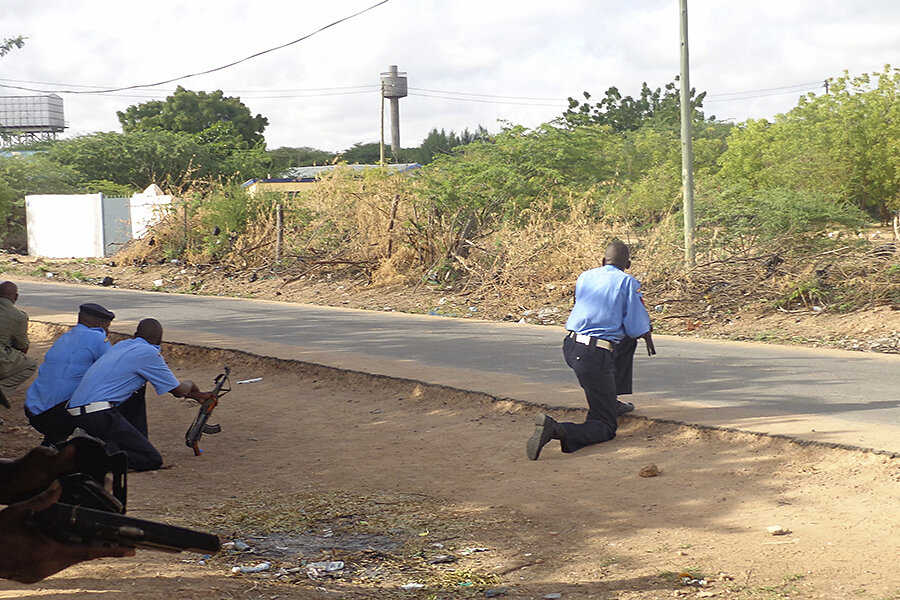Al Shabab shows endurance with deadly attack on Kenyan university
With its murders at Garissa University today, Al Shabab has cemented its status as Kenya's most serious terrorist threat, following on from its murder of 67 people at Nairobi's Westgate Mall in September 2013.
The initial death-toll for Thursday's attack was put at 14 by Kenyan authorities but appears very likely to rise, with Al Shabab – a Somalia-based Islamist group – telling Reuters that it had taken a number of Christian hostages at the university.
"We sorted people out and released the Muslims," Sheikh Abdiasis Abu Musab, an Al Shabab spokesman, told Reuters. "Fighting still goes on inside the college."
Compared to Nairobi's Westgate Mall, the university at Garissa was probably a softer target. The town lies 200 miles east of Nairobi and about 100 miles west of the southern Somali border and has been used by the Kenyan military to stage operations into Somalia against Al Shabab. In 2012, Islamist terror attacks on churches in the town left 17 dead.
Those attacks followed Kenya's decision to invade Somalia in late 2011 and try to root the group out, particularly from the southern Somali town of Kismayo, which had become a base of both business and military operations for the group. That effort was ultimately successful at Kismayo, but led to Al Shabab's increased attempts to attack civilians in Kenya, which continues to this day. In 2014, more than 170 Kenyans were killed in terrorist attacks.
Jonathan Masters and Mohamed Aly Sergie wrote a backgrounder on Al Shabab for the Council on Foreign Relations last month.
In areas it controls, al-Shabab enforces its own harsh interpretation of sharia, prohibiting various types of entertainment, such as movies and music, the sale of khat (a narcotic plant often chewed), smoking, the shaving of beards, and many other “un-Islamic” activities. Stonings and amputations have been meted out as punishment on suspected adulterers and thieves. International rights groups have reported that al-Shabab members have kidnapped young boys from schools and have forced them to fight for the group.
... Despite strategic setbacks inflicted by [African Union] forces over the past several years, including the loss of the Barawe in October 2014, al-Shabab remains in control of most of southern and central Somalia. The U.S. State Department's 2013 terrorism report estimates the group has several thousand members. Analysts say the group's resilience is likely the result of significant support from local clans and the perception among elders that it remains a plausible alternative to corrupt institutions in Mogadishu.
Though the group is weaker than when it controlled Mogadishu in alliance with the Islamic Courts Union, its ongoing ability to carry out massacres in Kenya is evidence that it isn't on the ropes. US airstrikes in Somalia killed Al Shabab leader Ahmed Abdi Godane last September. Godane was believed to have ordered the Westgate mall attack in Nairobi, but as today's violence shows, the group has proven adaptable.
And it has been taking a toll. Kenya's tourism industry, which is driven by both game-viewing safaris and Indian Ocean beach holidays, has been hammered since the Westgate attack. Just yesterday, Kenyan President Uhuru Kenyatta complained that travel warnings issued by the US and other foreign governments were unfair.
"The travel advisories being issued by our friends are not genuine," Kenyatta said. "I have not heard of any travel advisory issued to those visiting Paris, which recently experienced a terror attack."
President Kenyatta has made fighting terrorism one of his highest priorities. Last December, he signed a new terrorism law that gave police sweeping new powers, including the right to censor news about terrorism.






